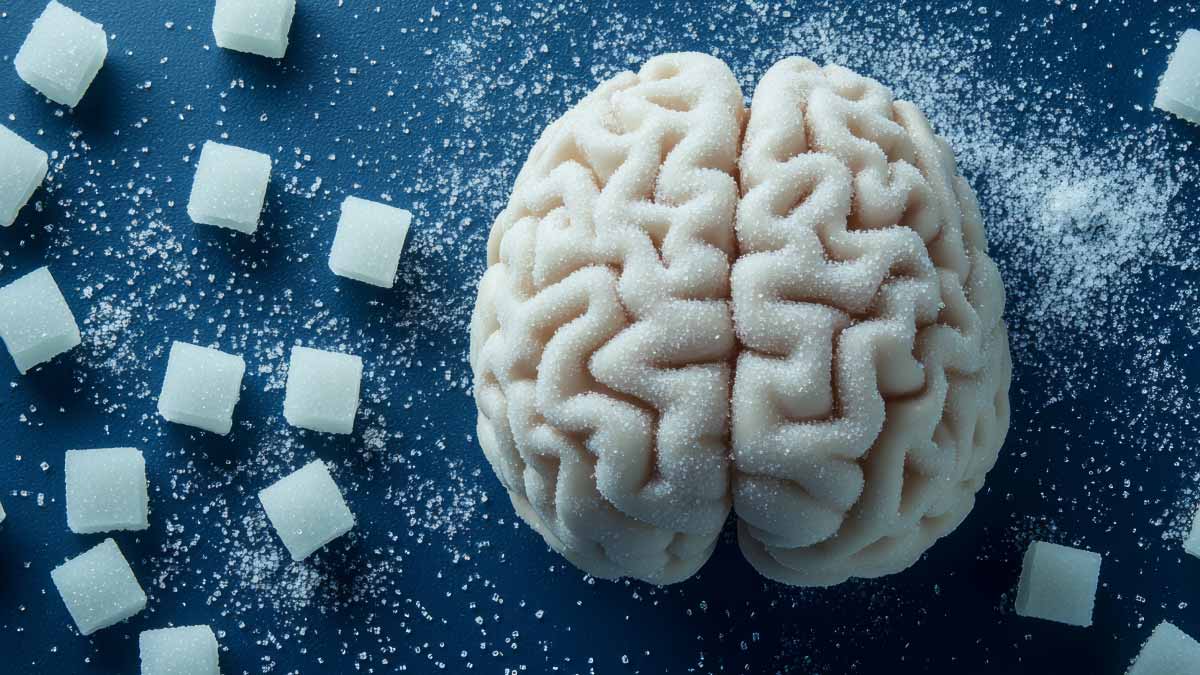Sugar-free shelves look safe at first glance. Yet a widely used low-calorie sweetener now raises urgent questions about brain vessel function and heart attack risk. Fresh cell data show rapid changes after an everyday dose, while large cohorts report more strokes and heart events when blood levels run high. The signal is consistent, which calls for caution without alarm.
Fast vessel stress that raises heart attack risk
This additive is a sugar alcohol present in small amounts in fruit, yet made at scale from corn or wheat starch. People use it because it tastes like sugar, with near-zero calories and minimal glycemic impact. It suits diabetes management and keto plans, and it usually causes fewer gut issues. Your body absorbs most of it, then, importantly, it crosses into the brain.
Researchers exposed human brain endothelial cells—the gatekeepers of cerebral blood flow—to a dose equal to one sugar-free drink. Exposure lasted three hours. Inside that window, oxidative stress surged. Reactive oxygen species rose, while antioxidant defenses tried to respond and fell short. That mismatch increases the chance of protein, lipid, and DNA damage inside delicate vascular cells.
The same exposure reduced nitric-oxide-mediated relaxation. Total enzyme abundance barely changed, yet function slipped. Two regulatory sites shifted in opposite directions, and output fell roughly 20 percent. With less nitric oxide, vessels relax less. Constriction becomes more likely during routine strain. That biological direction, even in the short term, can elevate heart attack risk over time.
How cell changes translate into heart attack risk
Constriction signals also climbed. Endothelin-1 rose by about 30 percent, and its precursor Big ET-1 increased as well. The mix is unfavorable. Weaker widening meets stronger squeezing. Resistance creeps up in small brain vessels, which raises pressure and reduces perfusion during demand spikes. Because the brain needs steady flow, that shift matters at rest and during effort.
Clot control told the same story. Scientists added thrombin to mimic a clotting cue. In untreated cells, tissue-type plasminogen activator rose about 25 percent. That response helps dissolve clots before they block a vessel. In treated cells, the response went flat. The system stayed quiet when it should have acted. That pattern makes clot persistence more likely in real life.
Observational data align with these mechanisms. One analysis followed more than 4,000 adults in the United States and Europe for three years. People with higher blood levels of this sweetener experienced more strokes and heart attacks. The pattern appeared in both sexes and did not hinge on common conditions. Associations do not prove causation, yet fit the cell results closely and reinforce heart attack risk concerns.
Practical choices while stronger trials catch up
Daily exposure likely stacks. Many people drink several “no-sugar” beverages, chew sugar-free gums, and eat protein snacks that list this additive. Because it crosses into the brain, repeated servings may bathe endothelial cells many times each day. The lab dose matched a single drink. Multiple hits could extend stress beyond the three-hour window and amplify dysfunction.
You do not need fear to act. You need perspective and simple steps. Start by auditing labels on drinks, bars, candies, and mixes. Swap one sweetened item for unsweetened tea, coffee, or water. Use fruit for sweetness during meals, which softens glucose swings. That approach preserves taste, lowers additive load, and keeps diet quality high without strict rules.
For people managing diabetes or on keto plans, balance matters. Glucose control remains essential, and so does vessel flexibility. Because endothelial stress, reduced nitric oxide, and elevated endothelin can appear after a single serving, coordination with care teams helps. Small, steady reductions are realistic. Over weeks, they may trim cumulative strain and lower heart attack risk while preserving goals.
Practical, measured steps to protect brain flow and heart health
Taken together, the evidence points in one direction. Lab work maps a pathway: oxidative stress rises, nitric-oxide signaling falls, endothelin tightens vessels, and fibrinolysis stays muted under thrombin. Cohort data show more events when blood levels of this sweetener run high within three years. Quotes from the research team underscore prudence, not panic. Professor Christopher DeSouza argues that “generally safe” labels can hide trade-offs, while first author Auburn Berry notes tighter vessels plus weaker clot clearing raise stroke risk.
Use that context to make better choices today. Read labels with intent, especially on “zero-sugar” drinks and high-protein snacks. Reduce frequency before removing products entirely, since taste adapts quickly. When you need sweet flavor, choose small amounts of sugar with meals or whole fruit. Those swaps protect endothelial function, keep flow flexible, and may reduce heart attack risk without complicating daily life.
A forward-leaning caution for people who want simple, effective changes
This signal does not demand alarm. It asks for awareness and measured action. Given rapid endothelial shifts after a typical serving and consistent cohort patterns, small cuts to daily intake make sense now. You guard brain perfusion, give clots less time to linger, and, step by step, reduce heart attack risk while future randomized trials clarify the long-term picture.
